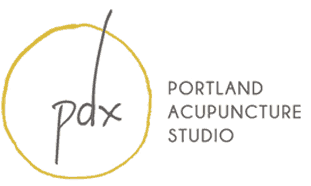
What is Acupuncture?
With over 10 million acupuncture treatments given in the United States each year1, many people are wondering what this treatment is all about. What is acupuncture? Acupuncture is one part of the umbrella term “Traditional East Asian Medicine.” Other modalities include herbal medicine, bodywork (tui na or shiatsu, for example), moxibustion (burning an herb at or above the skin), cupping, gua sha (a type of “scraping” massage), nutrition and lifestyle counseling, and Qi Gong.
In this blog post, we will focus on acupuncture, which is the act of inserting thin, solid (filiform) needles into the body. Originating in China and then eventually spreading across the globe, acupuncture has been practiced for thousands of years. There are many different types of acupuncture styles, each of them effective in their own right.
Some acupuncture styles limit the location of needling to the extremities (for example, scalp acupuncture is well-researched for treating stroke symptoms), other styles will insert needles anywhere on the body. There are 361 named acupuncture points throughout the body, each one affecting distinct aspects of our health, from improving blood circulation to regulating hormones, to reducing pain, to improving organ function.
How does an acupuncturist decide where to put needles? Each acupuncturist relies on a variety of techniques to determine the best treatment. We see the body holistically and ask a lot of questions to determine how interconnected imbalances in the body are causing your symptoms. We also use a physical examination – like feeling the pulse at the wrists or palpating the abdomen – to learn more about the state of the organs and vital functions of the body.
Other exams include looking at the tongue, palpating the channels, points, or regions of the body, observing the color of certain areas of the skin. Then your acupuncturist puts together a treatment plan that will address both the symptoms and the underlying imbalance – helping you reach your health goals.
Acupuncture as a modality is thousands of years old2. Our oldest medical text, the Nei Jing (commonly translated as the Yellow Emperor’s Classic of Inner Medicine), dates back to about 100-200 B.C.E. and is the first documented evidence of acupuncture as an organized medical modality.
As it is practiced today, acupuncture is a blend of ancient traditions and modern medicine. We now have technologies like laser acupuncture and electrostimulation acupuncture. When research is done to test acupuncture’s effectiveness, scientific studies sometimes include “placebo” acupuncture techniques that attempt to blind both the practitioner and the patient.
Acupuncture has been studied in connection with a wide variety of conditions: nausea during pregnancy, low back pain, insomnia, digestive complaints, and mood disorders to name a few. With so many folks benefitting from acupuncture treatments, consider trying acupuncture to see if it helps with symptoms you might be experiencing.
Contact us today to see how acupuncture treatments might help you!
Established patients can schedule online, patients who haven’t seen us at Kwan Yin Healing Center call (503) 701-8766, or email us to schedule your appointment.
1. NYU Langone Medical Center. Acupuncture. http://www.med.nyu.edu/content?ChunkIID=155244 AccessedJune10, 2014
2. Hao JJ, Mittelman M. Acupuncture: past, present, and future. Global Adv Health Med. 2014;3(4):6–8. doi: 10.7453/gahmj.2014.042. (edited)




